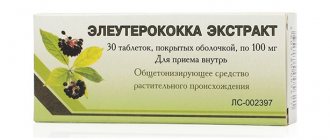A mercury temperature meter is still often used in everyday life, despite many other, safer options. But if a thermometer in an apartment breaks, not everyone knows what to do. And this is a dangerous element that requires special attention if it falls out of the glass shell.
The consequences of mishandling something like a mercury thermometer and causing it to break can seriously affect the health of those who have had contact with the substance. Children are often the most careless when handling “metal balls,” so you should follow the operating rules.
Harm of mercury to health and the environment
Before you go in search of an answer to the question of what to do if a mercury thermometer breaks in the house, let's figure out what substance you have to deal with and how it affects human health.
Interesting fact: initially, thermometers were water and alcohol, but when certain indicators were reached, their accuracy became less and less, and the error became more significant. Mercury, which is now used in thermometers, has a unique property - its volume changes evenly and gradually during the cooling and heating process.
A thermometer with mercury significantly reduced the time required to measure temperature and made the result as accurate as possible. In addition, the substance has a wide temperature range from –37 °C to +356 °C.
The first mercury thermometer appeared in 1714 thanks to Daniel Fahrenheit, who also invented the temperature scale that is still used in the USA to this day. If we talk about medical thermometers in the form to which we are accustomed, they appeared only in 1866.
What kind of substance is mercury? It belongs to the first class of chemical hazards. The most harmful vapors are substances that are invisible and odorless.
Due to the high prevalence of mercury thermometers, the substance has acquired a mass of myths that, like legends, are passed on from generation to generation. Which of this is true and what to do if a thermometer with mercury breaks in order to minimize its harmful effects.
- A drop of mercury kills instantly - a myth. Accidentally broken thermometers are very often the work of small children. In this case, parents are in a state of panic trying to determine whether all the mercury has been collected and whether small silver particles have entered the child’s stomach.
Mercury is a transition metal that does not belong to the category of potent poisons. Articles in the medical literature support this, describing a case in which a man ingested 200 grams of mercury and survived. By the way, the same amount of table salt can cause death. Mercury is used to make dental fillings and is not a prohibited or dangerous practice.
In its pure form, ingested mercury is not very dangerous, but the same cannot be said about its compounds and vapors.
- Toxic mercury vapor is dangerous to humans - true. What to do if the thermometer breaks and mercury leaks out? The first thing to understand is that toxic mercury vapor appears when the contents are exposed to open air. The vapors are colorless, tasteless and odorless. Inhaling them leads to mercury entering the body through the lungs, and this is much more dangerous than swallowing a ball.
- The room where the thermometer crashed is not suitable for living. This statement is only partly true. Over time, a film forms on the uncollected mercury balls, which prevents evaporation, which means its amount is significantly reduced.
Having rolled under the baseboard, the ball stops polluting the environment. However, this only happens if it is not subjected to mechanical stress and heat. The mercury that ends up in the cracks of the parquet, subject to constant loads and movement, will evaporate until it completely disappears.
A very popular question is how long does evaporation take? The ball, which is about 3mm in diameter, will take 3 years to completely disappear.
- Mercury poisoning is immediately noticeable. This statement is relatively true. Signs of poisoning are noticeable only at high concentrations of the substance. The concept of “high horsepower” is used by representatives of alternative medicine who offer drugs based on chelate compounds. According to them, they are able to remove mercury from the body, but there is no scientific evidence of this.
Pros of a mercury thermometer
- it more accurately measures the temperature of the human body, and its readings can be compared with those of a gas thermometer, which is considered a reference thermometer.
- such a thermometer is less susceptible to extraneous factors and temperature fluctuations than its “colleagues”.
— by placing a mercury thermometer in a disinfectant solution, you can quickly disinfect it, which cannot be said about other types of thermometers.
- this thermometer is inexpensive when compared with electronic versions, and at the same time it is quite difficult to manufacture, because it requires mercury of special purification and fairly high quality. This fact gradually leads to the fact that there are fewer mercury thermometers, and more electronic ones, and with constant progress in the field of high technology, electronic thermometers will fall in price and become more attractive to buyers.
- A mercury thermometer is very easy to use.
What happens if the thermometer breaks
What happens if the thermometer breaks
The mercury from a broken thermometer, if not collected, will inevitably lead to poisoning. The only question is what severity it will be.
Poisoning is understood as a pathological condition that was caused by exposure to mercury vapor. Concentrations within 0.25 mg/m³ lead to disruption of the breathing process; anything higher than these indicators affects all organs of the human body.
Elevated concentrations are medically defined as more than 150 μg/L in urine and 35 ng/ml in blood.
So what could potentially be dangerous about an ordinary thermometer in an apartment? Mercury vapor reacts with selenium, this component is responsible for the reduction of the thioredoxin protein. Without the latter, many vital processes in the body cannot take place, for example, the fight against free radicals that destroy cells.
What to do if the thermometer breaks
Let's move on to the main question, what to do if a mercury thermometer breaks and its contents end up on the floor, table or other surfaces.
First of all, you need to protect everyone who is in the apartment or house. Family members and pets should be removed from the contaminated room. This must be done quickly so that they do not breathe mercury vapor and spread particles of the substance to other rooms.
It’s great if you have potassium permanganate at home. Dilute it in water, wet a rag and place it on the threshold of the room. The minimum protection that you have at hand is a cotton-gauze bandage soaked in a soda solution and rubber gloves. If possible, wear synthetic clothing. Synthetics, compared to natural materials, absorb mercury vapor worse.
Ventilation
Cleaning a damaged thermometer begins with an open window. Fresh air will reduce the concentration of vapors in the room. In addition, in winter and autumn, cool air lowers the indoor temperature and the evaporation process slows down.
Mechanical collection of mercury
Proper collection of mercury is 80% of success in eliminating the consequences of its release into the air. How to collect mercury from a broken thermometer? If the substance gets on the floor in hard-to-reach crevices, fill them with sand and carefully collect them on a piece of paper using a small brush. Thoroughly treat the entire area with a demercurizer and rinse with water.
Another way to get mercury balls out of hard-to-reach places on the floor is to use a medical needle with cotton wool wrapped around it. Remember that all used devices must be kept together with the collected mercury in an airtight glass container.
Chemical treatment
Demercurization is a concept that combines a set of measures for the physical and chemical removal of spilled mercury. After you have collected the mercury, you need to treat the floor and furniture surface.
You can do this yourself, subject to the recommended proportions of the compositions:
- 0.2% potassium permanganate solution + vinegar essence at the rate of 1 liter of water per 5 ml of solution;
- 2% “Whiteness” per 4 liters of water, 500 ml of product;
- 20% bleach solution;
- 40 g soap + 50 g soda + 1 liter of warm water.
Apply the solution to the surface and leave for at least 7 hours. After time, rinse with clean water. At the same time, leave the window open to ventilate the room.
Cleaning the premises
- The next day, be sure to do a thorough cleaning. To do this, mix 20 grams of potassium permanganate with ten liters of water. The resulting mixture is applied in any convenient but safe way to the floor, especially in the contaminated area.
- We leave the liquid to perform its direct functions for an hour, then wash off the residue with a strong soap solution (preferably with the addition of soda). We repeat the procedure a couple more times during the day, and in the following days. This is especially important if children or pets will crawl on this floor.
- It may happen that a toxic element ends up on upholstered furniture, on the carpet pile, or other hard-to-reach place, and you realize that you haven’t fully managed the cleaning. There is a way out: Call a special service that provides demercurization the premises. The service will be paid, but it will be cheaper than risking your health and the health of your loved ones.
How to collect mercury
What to do if the thermometer breaks on a smooth surface? To collect, you need to arm yourself with a glass jar half filled with cold water. The thing is that mercury is heavier than water and, when placed in it, sinks to the bottom. This minimizes the formation of vapors harmful to life and health.
Among the “tools” it will be convenient to use 2 sheets of thick paper, a small brush, tape or adhesive tape, a medical bulb and a syringe with a thick needle.
Using sheets of paper, collect small balls in one place so that they form a single mercury stain. Using a shaving brush or shaving brush, “drive” a large ball onto a sheet of paper and pour into a jar of cold water.
If there are small balls left on the surface that cannot be collected together, use tape or a medical plaster, which should be placed in a jar of water along with the mercury.
What you need to know about eliminating mercury from crevices - under no circumstances shine light on the mercury balls with table lamps with ordinary, very hot incandescent lamps. High temperatures speed up the evaporation process. At home, it is better to use a mobile phone flashlight. Collect small balls with a medical bulb or syringe. The same recommendation is relevant if mercury gets on the carpet.
What to do if the thermometer breaks, but the mercury does not leak out? In this case, you first need to make sure that the mercury does not leak out if you lift the glass flask. Prepare a jar of water in advance and place a thermometer with its contents there. Be sure to wear gloves.
What should you do if the thermometer in your apartment breaks and the process of collecting the substance is delayed? Every quarter of an hour, go out into the fresh air; if it’s summer outside and it’s impossible to reduce the temperature in the room, reduce this time to 10 minutes.
It happens that we wonder what to do if the thermometer breaks and I can’t find mercury. In this situation, it is important to understand that mercury cannot evaporate or disappear in a short period of time, which means it has insidiously “hidden” somewhere, moved into cracks in the floor or under the baseboard. Perhaps you are looking for it in a completely different place, where the smallest balls scattered.
There is only one way to act in this situation - call a special service with equipment. Your inner peace will only make the situation worse, since the contents of a mercury thermometer can take up to 5 years to evaporate, poisoning you and your loved ones.
The advantage of calling special services is that they will not only help you find and neutralize mercury, but will also carry out control measurements of the level of mercury concentration in the room.
Where to put the collected mercury from a thermometer
So, we figured out what to do and where to call if the thermometer breaks, how to properly collect its remains. What will happen next? You will not be able to dispose of mercury on your own; it should not be thrown into the trash can or poured down the drain.
Not long ago, an interactive map appeared on the territory of our country, which marks places where you can donate not only old, broken thermometers, but also other highly polluting products and materials. There are 2805 such posts in various cities, but their number is constantly growing.
If it is not possible to immediately transport the container with a broken thermometer, leave it in a dark room, away from people, sunlight and heat. A garage is quite suitable for this role.
Unfortunately, the state does not regulate the issue of disposal of household medical thermometers and mercury from them. Obsolete thermometers are accepted only from medical organizations.
In what cases should you call specialists?
The Ministry of Emergency Situations on its official website gives detailed recommendations for the collection of mercury in residential premises. Immediately after the thermometer has broken, it is better to call the rescue service at 101 or 112 and consult with a representative of the Ministry of Emergency Situations on this issue.
Unfortunately, in Russia there is no well-functioning system for organizing the collection and disposal of mercury. In some cases, representatives of the SES and the Ministry of Emergency Situations do not even go to the scene of the incident, and give recommendations for collecting mercury over the phone. If employees refuse to respond to a call, contact a higher authority and ask for help. If you do not get a team to come out, collect the mercury yourself and take it to a radioactive waste collection point.
In megacities, there are often private companies that collect and dispose of the remains of broken thermometers and mercury. They also check the air for fumes. However, since these firms are private, you will have to pay to call a specialist.
What are the signs of mercury vapor poisoning?
We figured out what to do if a thermometer breaks and how to protect yourself as much as possible, but it wouldn’t hurt to know about the manifestations of poisoning with this substance.
If a thermometer suddenly breaks, the consequences of the incident are not so terrifying. Acute vapor poisoning is impossible at home and cannot be caused by a thermometer alone. The condition occurs exclusively during large-scale accidents at enterprises, when the concentration of vapors reaches a critical level and they enter the body in a short period of time.
The first signs of poisoning will be noticeable after 2-3 hours. Most often this is severe malaise, lack of appetite, and headaches. A metallic taste appears in the mouth, it becomes painful and difficult to swallow, the gums become inflamed and begin to bleed. Over time, acute abdominal pain, diarrhea, chills, shortness of breath and difficulty breathing are added to the above symptoms. Body temperature often rises to 40 degrees. Ignoring these symptoms and making an incorrect diagnosis can be fatal.
Chronic mercury poisoning occurs when long-term exposure to the body occurs at relatively low concentrations. Long-term exposure refers to a period ranging from several months to a couple of years.
In case of chronic poisoning, the central nervous system is the first to be affected. In the first stages, drowsiness, excessive fatigue, frequent headaches, and apathy appear. Poisoning the body with mercury vapor also affects a person’s behavior; he becomes irritable, inattentive, and unsure of himself.
Subsequently, such an unpleasant syndrome as mercury tremor appears. Trembling begins with the fingers, then moves to the eyelids and lips; in more severe cases, tremor of the lower extremities and the whole body is observed. In addition, poisoning is often accompanied by loss of taste and skin sensitivity, increased sweating, and an enlarged thyroid gland. The worst thing about chronic poisoning is that all these symptoms and consequences can appear several years after contact with mercury.
Micromercurialism belongs to the category of chronic poisoning and occurs when mercury in negligible concentrations affects a person for 5-10 years. It is possible to find out the cause only if you pay timely attention to a number of symptoms, such as fatigue, increased excitability, and weakened memory.
Micromercurialism can occur even without direct human contact with mercury. It will be enough to be near a room in which a thermometer was once broken; the mercury did not leak out, but was not properly cleaned.
At the first signs of illness with suspected poisoning, you must leave the room and rinse your mucous membranes. This recommendation applies to the nose, mouth and eyes, as well as exposed areas, even if they have not come into contact with mercury. Rinsing can be done with running clean water or a weak solution of potassium permanganate, diluted to a light pink color.
If necessary, gastric lavage can only be done through a tube; other methods will be ineffective and even dangerous. A course of sorbents and intravenous administration of an antidote are also prescribed.
What not to do
If the thermometer breaks, what should we do and what should we not do?
Collected mercury should never be washed down the drain. The substance easily settles on the walls of the pipes and will continue to poison you and your neighbors. In addition, mercury cannot be disposed of by simply throwing it in the trash.
When collecting mercury, a vacuum cleaner seems to be the fastest and most reliable way, but this is far from true. Firstly, you will irrevocably damage your home assistant, since the mercury will remain on the tubes and bag of the vacuum cleaner. Secondly, the vacuum cleaner heats up during operation and the evaporation of mercury will only accelerate.
Don't try to sweep the floor. The thing is that one drop of mercury evaporates less toxic fumes than the same mass of substance divided into several sources. The desire to sweep will only end with your own hands increasing the concentration of mercury in the room.
Let's think if a thermometer breaks, how dangerous it can be. A number of studies by American scientists have shown that a drop with a diameter of 4 mm in a room of 20 m³ per hour increases the concentration of mercury vapor to 0.29 micrograms. If this drop is rubbed over the floor surface, thereby increasing its area, the evaporation will reach 100 micrograms per 1 m³. These indicators will be 10 times higher than the norms allowed in industrial premises.
If mercury gets on your clothes, you will have to get rid of it. Neither hand nor machine washing will help. In addition, using a washing machine will cause mercury particles to enter the drum and filter, resulting in fumes still being released.
Another mistake is using incandescent lamps in table lamps when trying to find mercury residues. By directing a light source from an ordinary lamp to mercury, you also point the flow of heat, which leads to accelerated evaporation of the harmful substance. Add to this your proximity to evaporated mercury, and as a result you find yourself in the very epicenter of the harmful effects.
Why is it dangerous?
Inside the thermometer there is a dangerous substance - mercury. It is she who “runs” along the temperature scale. When the toxic metal is outside the glass flask, it begins to release toxic fumes. They enter the human lungs and can penetrate the skin and mucous membranes.
It just seems that the amount of mercury inside the thermometer is negligible - even with it you can be seriously poisoned. Characteristic symptoms of body intoxication:
- metallic taste in the mouth;
- weakness;
- lack of appetite;
- pain when swallowing;
- nausea and vomiting;
- headache;
- heat.
In case of mercury poisoning, you should immediately consult a doctor. While the ambulance is traveling, it is necessary to open the windows and give the injured person plenty of water. Activated carbon is taken orally to neutralize the toxin. Prolonged exposure to a hazardous substance has detrimental health consequences.
Oddly enough, ingesting mercury (for example, if a child puts a thermometer in his mouth) is not as bad as inhaling its vapor. The fact is that the toxic effect begins in the air. The metal will pass through the digestive system and be released naturally. But the baby should still be shown to the doctor to rule out poisoning.
Another danger of a broken thermometer is fragments of the glass case. They can cut you. Looking ahead, it must be said that you cannot remove the remains of the thermometer with a vacuum cleaner or broom. You will have to assemble them manually: wearing gloves and very carefully.
Summing up
Mercury thermometers are slowly but surely leaving our medicine cabinets, giving way to more modern and safer designs. In the United States, their production has been discontinued for 10 years and mass voluntary disposal is underway. Unfortunately, concern for the safety of people and environmental pollution in our country is just showing its first shoots. For the most part, everything falls on the shoulders of conscious citizens.
Be that as it may, having a mercury thermometer at home and access to it by family members obliges you to know the rules of operation and, if necessary, disposal of mercury. Of course, if possible, replace your usual thermometer with a new mercury-free model, especially if there are children in the family.
Disposal
As with other hazardous wastes, mercury thermometers cannot simply be thrown in the trash, taken to the forest, or buried in the yard. The substance they contain is extremely harmful to humans and nature - it is assigned hazard class I-II.
You need to find out where the demercurization center is located in your city and take the jar with the remains of the thermometer there. The easiest way to get this information is by calling rescuers 112.
Please note that there are government and commercial organizations that accept mercury devices for disposal. In the first case, you do not need to pay, but there may be only one such center in a large city. There are more private companies, and they are located in different areas, but for their services you will have to pay up to 2 thousand rubles (including travel for demercurization and disposal of hazardous waste). Remember that the legal entity must have the appropriate license.
Some management companies and homeowners associations enter into agreements with organizations that have the right to dispose of hazardous waste. Ask if such a service is available in your home.










